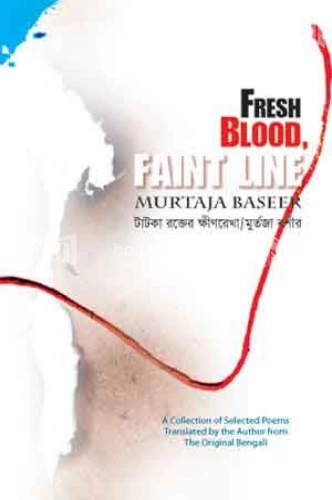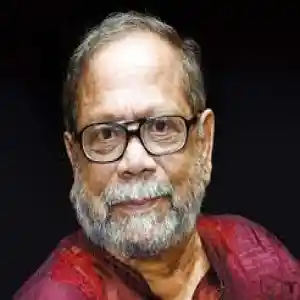He has himself rendered the poems into English. The present volume is basically a work of translation, the originals merely accompany the renditions. ....
The pieces, in the main, are love poems. These are references to nature and to places at home and abroad,?but all these are presented as a background of the emotional experience. The poems deal with the variety of deep feelings of love. As a versifier he is quite careful about the metre. His style is simple and graceful. .... Anisuzzaman
Murtaja Baseer (born 17 August 1932), who has established his individual style, is considered one of the foremost painters of Bangladesh. He is also known as a versatile genius. Throughout his illustrious career, Baseer has gradually transformed his style into abstract realism. Baseer joined Dacca Art College as a student in 1949. The artist is the son of Dr. Muhammad Shahidullah, an outstanding scholar and linguist.
Baseer is still actively exploring the diverse world of art. He has done a series of works articulating contemporary life and issues. Hope, aspiration and strange visions are evoked with passion in his images. Many are perhaps not familiar with Baseer's other identities. He is also a poet, short story writer, novelist, researcher, numismatist and filmmaker. Baseer has written novels and was acclaimed for his meticulous style and unique choice of themes. In 1954, he wrote a novel, titled Ultramarine. The novel was based on the contemporary life in Kolkata and the prevailing social issues. He had published a collection of short stories called Kanch-er Pakhir Gaan in 1969.
He wrote two more novels -- Mitar Shangey Char Shandha and Amitakkhar. He has a collection of selected works, Murtaja Baseer: Murto O Bimurto. He was a regular contributor to now defunct literary journals like Dilruba, Samakal and Saogat.
Baseer's first published poem was Parbe Na. The poem delved deep into patriotism and socialism. It was included in Ora Pran Dilo -- a compilation of poems on the Language Movement, which was published from Calcutta (now Kolkata) in 1952. The cover was designed from a linocut of Somnath Hore, a veteran Indian painter-sculptor.
Baseer has also worked as a screenplay writer, art director and chief assistant director for the Bangla film Nadi O Nari in 1964, and as an art director for the Urdu film Kaise Kahoon in 1965. He was active in leftist politics during 1950s and was sent to prison for a while during erstwhile Pakistan government. He is a philatelist, which is lesser known fact about him.
In 1987, he received a fellowship from British Council to carry out research on folk and traditional art of Bangladesh. In 1988, he visited several museums in Delhi, Calcutta, Banaras and 3000 villages under nine districts of West Bengal -- under the fellowship of Indian Council for Cultural Relations (ICCR). His work 'Mudra O Shilalipir Aloke Banglar Habshi Sultan O Tothkalin Samaj' was published in 2004. Several articles by Baseer have been published in the Journal of the Numismatic Society of India, a prestigious publication
মুর্তজা বশীর এর Fresh Blood, Faint Line এখন পাচ্ছেন বইফেরীতে মাত্র 213.00 টাকায়। এছাড়া বইটির ইবুক ভার্শন পড়তে পারবেন বইফেরীতে। Fresh Blood, Faint Line by Mortaza Bashiris now available in boiferry for only 213.00 TK. You can also read the e-book version of this book in boiferry.















